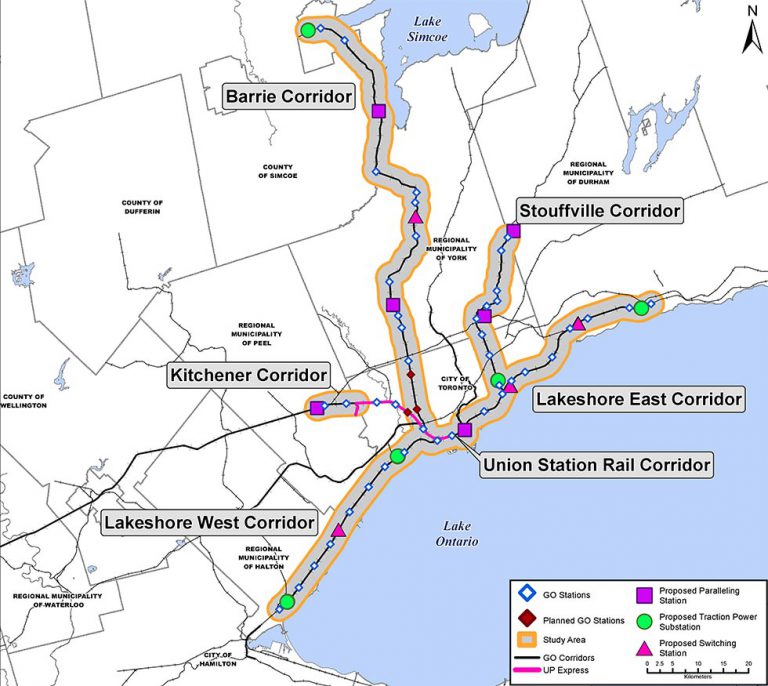Toronto: Moving Beyond Rush Hour, Planning for the Future
Until 2012, Go Transit in Toronto was a rush hour operation. Only two lines provided any midday service, and the
vast majority of service was geared towards peak ridership. In the past decade, the agency has shifted towards
providing more comprehensive service. A new spur was built to the airport using DMUs, with plans to electrify
this service and the busiest main lines, within the decade. The agency has bought 80 percent of the lines over
which it operates in recent years and is planning upgrades to allow more bidirectional service on otherwise
single-track lines, with the end goal of a Paris-style system with frequent service between Toronto, its inner
suburbs, and regional cities further afield.
Trains in Toronto serve Union Station, which has run-through tracks, meaning that the city does not have the
stub-terminal capacity issues which developed in many other cities and require tunneling projects. Most service
today begins or ends at Union Station, but through-running service is possible without major infrastructure
changes. The challenges for Toronto extend beyond Union Station: taking control of track, managing freight
railroad interactions, and adding electrification to allow faster, more efficient service. The costs—$10.5 billion
over 10 years—are high, but include electrification and significant new track construction to allow bidirectional
operation, and Metrolinx, the regional government, makes the case that the service improvements, reduced
operating costs and regional benefits will pay their way.

